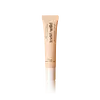What's inside
What's inside
 Key Ingredients
Key Ingredients

 Benefits
Benefits

 Concerns
Concerns

No concerns
 Ingredients Side-by-side
Ingredients Side-by-side

Polyisobutene
Tridecyl Trimellitate
EmollientHydrogenated Polyisobutene
EmollientOctyldodecanol
EmollientWater
Skin ConditioningDextrin Palmitate
EmulsifyingSilica Dimethyl Silylate
Emollient1,2-Hexanediol
Skin ConditioningTocopherol
AntioxidantEthylene/Propylene/Styrene Copolymer
Helianthus Annuus Seed Oil
EmollientCaprylyl Glycol
EmollientDimethicone
EmollientPentaerythrityl Tetra-Di-T-Butyl Hydroxyhydrocinnamate
AntioxidantEthylhexylglycerin
Skin ConditioningSodium Dna
Skin ConditioningButylene Glycol
HumectantButylene/Ethylene/Styrene Copolymer
Propanediol
SolventSaccharide Isomerate
HumectantBrassica Oleracea Italica Extract
AstringentHyaluronic Acid
HumectantHydrolyzed Sodium Dna
Skin ConditioningTripeptide-1
Skin ConditioningGlycerin
HumectantMyrothamnus Flabellifolia Leaf/Stem Extract
HumectantSodium Hyaluronate Crosspolymer
HumectantPantothenic Acid
Skin ConditioningCitric Acid
BufferingSodium Citrate
BufferingAscorbic Acid
AntioxidantPolyglutamic Acid
Skin ConditioningXylose
HumectantAcetyl Hexapeptide-8
HumectantPolyisobutene, Tridecyl Trimellitate, Hydrogenated Polyisobutene, Octyldodecanol, Water, Dextrin Palmitate, Silica Dimethyl Silylate, 1,2-Hexanediol, Tocopherol, Ethylene/Propylene/Styrene Copolymer, Helianthus Annuus Seed Oil, Caprylyl Glycol, Dimethicone, Pentaerythrityl Tetra-Di-T-Butyl Hydroxyhydrocinnamate, Ethylhexylglycerin, Sodium Dna, Butylene Glycol, Butylene/Ethylene/Styrene Copolymer, Propanediol, Saccharide Isomerate, Brassica Oleracea Italica Extract, Hyaluronic Acid, Hydrolyzed Sodium Dna, Tripeptide-1, Glycerin, Myrothamnus Flabellifolia Leaf/Stem Extract, Sodium Hyaluronate Crosspolymer, Pantothenic Acid, Citric Acid, Sodium Citrate, Ascorbic Acid, Polyglutamic Acid, Xylose, Acetyl Hexapeptide-8
Diisostearyl Malate
EmollientHydrogenated Polyisobutene
EmollientBis-Behenyl/Isostearyl/Phytosteryl Dimer Dilinoleyl Dimer Dilinoleate
EmollientPentaerythrityl Tetraethylhexanoate
EmollientMicrocrystalline Wax
Emulsion StabilisingSynthetic Fluorphlogopite
Dextrin Palmitate
EmulsifyingButyrospermum Parkii Butter
Skin ConditioningSilica Dimethyl Silylate
EmollientEthylene/Propylene/Styrene Copolymer
Synthetic Wax
AbrasiveEuphorbia Cerifera Wax
Squalane
EmollientPunica Granatum Seed Oil
EmollientHydrolyzed Hyaluronic Acid
HumectantCaprylic/Capric Triglyceride
MaskingTocopherol
AntioxidantButylene/Ethylene/Styrene Copolymer
Dehydroacetic Acid
PreservativeGlycine Soja Sterols
EmollientLinoleic Acid
CleansingPhospholipids
Skin ConditioningRosa Damascena Flower Oil
MaskingPentaerythrityl Tetra-Di-T-Butyl Hydroxyhydrocinnamate
AntioxidantWater
Skin ConditioningButylene Glycol
Humectant1,2-Hexanediol
Skin ConditioningNelumbium Speciosum Flower Extract
Skin ConditioningOligopeptide-1
Skin ConditioningGeraniol
PerfumingCitronellol
PerfumingDiisostearyl Malate, Hydrogenated Polyisobutene, Bis-Behenyl/Isostearyl/Phytosteryl Dimer Dilinoleyl Dimer Dilinoleate, Pentaerythrityl Tetraethylhexanoate, Microcrystalline Wax, Synthetic Fluorphlogopite, Dextrin Palmitate, Butyrospermum Parkii Butter, Silica Dimethyl Silylate, Ethylene/Propylene/Styrene Copolymer, Synthetic Wax, Euphorbia Cerifera Wax, Squalane, Punica Granatum Seed Oil, Hydrolyzed Hyaluronic Acid, Caprylic/Capric Triglyceride, Tocopherol, Butylene/Ethylene/Styrene Copolymer, Dehydroacetic Acid, Glycine Soja Sterols, Linoleic Acid, Phospholipids, Rosa Damascena Flower Oil, Pentaerythrityl Tetra-Di-T-Butyl Hydroxyhydrocinnamate, Water, Butylene Glycol, 1,2-Hexanediol, Nelumbium Speciosum Flower Extract, Oligopeptide-1, Geraniol, Citronellol
 Reviews
Reviews

Ingredients Explained
These ingredients are found in both products.
Ingredients higher up in an ingredient list are typically present in a larger amount.
1,2-Hexanediol is a synthetic liquid and another multi-functional powerhouse.
It is a:
- Humectant, drawing moisture into the skin
- Emollient, helping to soften skin
- Solvent, dispersing and stabilizing formulas
- Preservative booster, enhancing the antimicrobial activity of other preservatives
Butylene Glycol (or BG) is used within cosmetic products for a few different reasons:
Overall, Butylene Glycol is a safe and well-rounded ingredient that works well with other ingredients.
Though this ingredient works well with most skin types, some people with sensitive skin may experience a reaction such as allergic rashes, closed comedones, or itchiness.
Learn more about Butylene GlycolWe don't have a description for Butylene/Ethylene/Styrene Copolymer yet.
Dextrin Palmitate comes from the palmitic acid ester of Dextrin. It is used as an emulsifier and texture enhancer.
Emulsifiers help keep ingredients together. According to a manufacturer, dextrin palmitate helps create a low-viscosity gel texture.
Due to its fatty acid base, this ingredient is not fungal-acne safe.
Learn more about Dextrin PalmitateWe don't have a description for Ethylene/Propylene/Styrene Copolymer yet.
Hydrogenated Polyisobutene is a synthetic polymer. Polymers are compounds with high molecular weight. Hydrogenated Polyisobutene is an emollient and texture enhancer.
In one study, Hydrogenated Polyisobutene showed better skin hydration levels than Caprylic/Capric Triglyceride. As an emollient, it helps keep your skin soft and hydrated by trapping moisture in.
Hydrogenated Polyisobutene is often used as a mineral oil replacement.
Learn more about Hydrogenated PolyisobutenePentaerythrityl Tetra-Di-T-Butyl Hydroxyhydrocinnamate (long name, huh?) is a synthetic antioxidant.
It is used to help stabilize other antioxidants or prevent the color from changing in a product.
As an antioxidant, it helps fight free-radical molecules. Free-radical molecules are capable of damaging our cells and other genetic material. Thus, antioxidants may reduce the signs of aging.
This ingredient is oil-soluble.
Learn more about Pentaerythrityl Tetra-Di-T-Butyl HydroxyhydrocinnamateThis silica is mainly used to thicken oils and suspend particles in oils. It is not water soluble.
According to the manufacturer, it:
The manufacturer also claims this ingredient to be useful in makeup.
In lipstick formulations, this ingredient improves color payoff, reduces pigment settling, and reduces oil bleeding. This ingredient also improves the grip of powder products such as dry shampoos.
Learn more about Silica Dimethyl SilylateTocopherol (also known as Vitamin E) is a common antioxidant used to help protect the skin from free-radicals and strengthen the skin barrier. It's also fat soluble - this means our skin is great at absorbing it.
Vitamin E also helps keep your natural skin lipids healthy. Your lipid skin barrier naturally consists of lipids, ceramides, and fatty acids. Vitamin E offers extra protection for your skin’s lipid barrier, keeping your skin healthy and nourished.
Another benefit is a bit of UV protection. Vitamin E helps reduce the damage caused by UVB rays. (It should not replace your sunscreen). Combining it with Vitamin C can decrease sunburned cells and hyperpigmentation after UV exposure.
You might have noticed Vitamin E + C often paired together. This is because it is great at stabilizing Vitamin C. Using the two together helps increase the effectiveness of both ingredients.
There are often claims that Vitamin E can reduce/prevent scarring, but these claims haven't been confirmed by scientific research.
Learn more about TocopherolWater. It's the most common cosmetic ingredient of all. You'll usually see it at the top of ingredient lists, meaning that it makes up the largest part of the product.
So why is it so popular? Water most often acts as a solvent - this means that it helps dissolve other ingredients into the formulation.
You'll also recognize water as that liquid we all need to stay alive. If you see this, drink a glass of water. Stay hydrated!
Learn more about Water